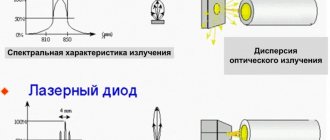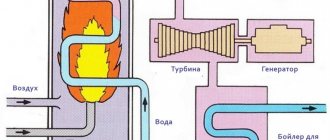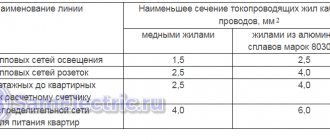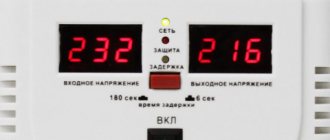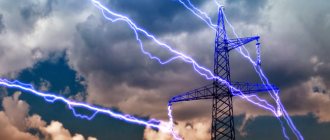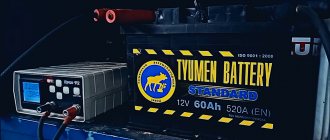Good day to all! In the last article, I talked about determining the overall power of a RG transformer and determining the filling factor of the window kok of the transformer. This data is not enough to select a transformer. Its parameters are significantly influenced by specified quantities, for example, voltage, frequency, mode and operating conditions. Often the type of transformer, its core and windings are known initially, otherwise they should be selected based on the given conditions.
To assemble a radio-electronic device, you can pre-make a DIY KIT kit using the link.
Why is the transformer magnetic circuit made of separate sheets of electrical steel?
The magnetic core is the structural basis of the transformer. It serves to conduct the main magnetic flux. To reduce the magnetic resistance along the path of this flow and, consequently, reduce the magnetizing current, the magnetic circuit is made of special electrical steel.
Interesting materials:
How to make animation in a power point presentation? How to make an animated ava in Telegram? How to make an animated picture in Photoshop? How to make an animated avatar on Steam? How to do anonymous voting in Among AS? How to make anonymous questions on Insta 2022? How to make an antenna in the game Bearded Man 3? How to make coffee flavoring? How to make an avatar on YouTube on your phone? How to make an auto-dial on MTS?
Composition and production
Electrical steel is an alloy of iron and iron silicide (FeSi) in various proportions:
- hot rolled alloy up to 3.3% FeSi (E41, E42, E43);
- in cold-rolled alloy up to 4.5% FeSi (E310, E320, E3ZO).
Silicide removes oxygen from iron, which reduces magnetic properties. Iron is reduced from oxides, silicon oxide is formed, which is partially converted into slag. At the same time, cementite (Fe3C) is replaced by graphite. Sometimes up to 0.5% aluminum is added during the production process. Finished products are supplied in the form of thin sheets.
- E – electrical;
- First digit (aluminum content):
- “1” – lightly alloyed;
- “2” – medium alloyed;
- “3” – highly alloyed;
- “4” – highly alloyed;
- “A” – small specific losses;
- 0 – cold rolled.
At the end of processing, hot-rolled alloys are exposed to high temperatures, which allows them to be given the required thickness parameters. High temperature promotes the restructuring of bonds between molecules, which entails a decrease in certain properties.
A cold-rolled alloy has a higher magnetic permeability if it coincides with the rolling direction. The indicator across is much lower, so it is better to produce the core so that the lines meet and use special assembly methods. In addition, cold rolling increases the mechanical strength and surface quality of sheets due to the formation of a crystallographic texture. Its quality depends on the degree of compression, processing temperature and sheet thickness.
For these reasons, most manufacturers try to make cores from E-3ZOA steel, although its cost is 2 times higher than the cost of hot-rolled material.
Operating modes
The characteristics of transformers are determined by operating conditions, where the load resistance plays a key role. The following modes are used as a basis:
- Idle move. The outputs of the secondary circuit are in an open state, the load resistance is equal to infinity. Measuring the magnetizing current flowing in the primary winding makes it possible to calculate the efficiency of the transformer. Using this mode, the transformation ratio is calculated, as well as losses in the core;
- Under load (working). The secondary circuit is loaded with a certain resistance. The parameters of the current flowing through it are directly related to the ratio of the turns of the coils.
- Short circuit. The ends of the secondary winding are short-circuited, the load resistance is zero. The mode informs about losses that are caused by heating of the windings, which in professional language is referred to as “copper losses”.
Short circuit mode
Information about the behavior of the transformer in various modes is obtained experimentally using equivalent circuits.
Converter power calculation
Each transformer has technical characteristics specified in the passport. It may be necessary to carry out independent winding and power calculations if the data is lost. The power value is important to determine whether a particular inverter can be used.
Before determining the power of the transformer based on the cross-section of the core, the type of magnetic circuit is studied. If the core has a W shape, perform the following calculations:
- measure the thickness of the set of plates;
- measure the central part;
- the results obtained are multiplied.
Metal letter “E” – what is it?
Everyone was tormented by the question in childhood - what kind of metal letter E or Ш is this?
This metal plate in the shape of the letter W or E (as you see it) is that same transformer steel, or rather the transformer core, made of electrical steel. I often came across such plates in my childhood - rusty, bent, glued together, someone sharpened them and threw them, as if with samurai shuriken.
The letter E or Ш is the one we saw in childhood
There seemed to be a whole bunch of these metal letters Ш (Э) lying around - they were in every yard, sometimes lying in whole scattered places, and they appeared after disassembling transformers like these, see photo:
Inside this transformer there is a core made of transformer steel and glued letters “E”
What is the core used for?
Core
serves for transformation, that is, transfer of the magnetic field from the primary winding to the secondary.
Interesting materials:
How long does the Prius battery last? How long will 1 GB of mobile Internet last? How long will 5 GB of traffic last? How long will 5GB of internet last? For how many years is a medical certificate valid for drivers? For how many years is a technical inspection valid? How many years is a driver's medical certificate valid for? For how many years do drivers get a medical certificate? How many years do you have a license in Russia? How long does a driver's license last?
Chemical composition of steel with improved magnetic characteristics
Based on the above, an increase in the silicon content in the metal reduces the specific gravity of iron oxides. As practice shows, at the same time there is an increase in the induction of Bs saturation of iron. Its maximum value is achieved at a Si content of 6.4%.
However, in terms of chemical composition, electrical steel remains an alloy metal with a silicon content of no more than 4.8%. This is due to the deterioration of the mechanical properties of the metal, brittleness in particular, with increasing Si concentration. Along with silicon, aluminum can be added to electrical steel at a level of 0.5%.
Electrical steel transformer core
Based on the chemical composition (content of alloying impurities), the metal is divided into two categories: dynamic and transformer steel. In the first type, the percentage of silicon is 0.8 - 2.5%, while transformer iron is characterized by a doping level of 3.0 - 4.5%.
How to choose the type of transformer?
The type of transformer is determined by the design of the core used in it. Currently, a wide variety of cores, especially ferrite ones, are produced. But among them three main types can be distinguished: rod (ST), armored (BT) and toroidal (TT). The rest are, in fact, their modifications with various design features.
It is impossible to make a clear choice in favor of one type or another, since each has its own advantages and disadvantages and must be used depending on the purpose and the requirements placed on it. The following requirements and their combination may be imposed on transformers: weight and size, cost, influence of internal and external magnetic fields, design factors and manufacturability.
The main types of transformer core designs: rod CT, armored BT and toroidal TT transformers (from left to right).
Under the condition of a minimum voltage drop (∆U) at industrial frequency (50 Hz), the BT has the smallest volume, and the CT has the smallest weight. Rod transformers are somewhat inferior to armored ones (up to 10%). With an increase in frequency, in terms of weight, CT improves its parameters compared to BT, and in terms of volume, it deteriorates. With increasing frequency, CTs significantly improve their weight and size indicators. Thus, provided that the voltage drop is minimal at a frequency of 50 Hz, the use of armored cores (AC) is recommended, and at higher frequencies, toroidal cores (CT) should be used if weight and volume play a decisive role.
If the key requirement for a transformer is constant operating temperature (∆T), then the recommendations are different. At low power, BT have an advantage, but in other cases, ST should be used even at higher frequencies. The use of CTs makes sense only at low powers, especially at higher frequencies, since with increasing power the advantages in mass and weight are smoothed out, and at high powers (over hundreds of watts) CTs begin to be inferior to both ST and BT.
As a result, we can say that for low-power transformers (up to 50 W) it is recommended to use BT and TT, and at high frequencies - TT. At powers of more than 50 W, the performance of CT becomes better than that of BT, and at powers of more than 250 W, it is better than that of TT.
If the condition for designing a transformer is the highest efficiency value, then at industrial frequency (50 Hz) the best performance is for BT and ST in descending order, and at higher and higher frequencies – TT and BT, also in descending order. It is also worth noting that the CT has the lowest magnetizing current, all other things being equal.
At high frequencies, leakage magnetic fields and susceptibility to external magnetic fields often play an important role. In this regard, the best performance is achieved by toroidal transformers (with the winding evenly distributed over the core), as well as rod transformers (with the winding equally distributed between the rods). The CT's own capacity is quite high compared to BT and ST.
From the point of view of manufacturability, BT and ST have the best performance. Among the disadvantages of CTs, the following can be highlighted: the need for sequential manufacturing of the core and coil, as well as the low productivity of winding the coil.
Recommended applications for various types of transformers.
| Transformer type | On stamped cores | On strip cores | ||
| Low voltage | Low power (up to 50 W) | BT | BT, ST | |
| Medium and high power (more than 50 W) | 50 Hz | BT | ST | |
| < 10 kHz | BT | ST, TT | ||
| > 10 kHz | BT, TT | TT, ST | ||
| High voltage (thousands of volts) | < 10 kHz | BT | ST, TT | |
| > 10 kHz | BT, TT | ST, TT | ||
| With high potential | < 10 kHz | BT, TT | ST, TT | |
| > 10 kHz | TT, BT | TT, ST | ||
| If reliable shielding is required | TT, ST | TT, ST | ||
| Note. The first to indicate the type of transformer, the use of which is preferable. | ||||
Ferrite grades
Ferrites according to their composition are divided into two groups: manganese-zinc and nickel-zinc. Manganese-zinc ferrites are designated by the letters NM, respectively, nickel-zinc substances are marked by the letters - NN. The number before the letter designation of ferrite means the value of the initial magnetic permeability in units of µinit. This indicator is given with an adjustment to the nominal value. For example, ferrite grade 4000NM has a magnetic permeability with a deviation ranging from – 800 to + 500 µinit.
Magnetic cores are of exceptional importance in the formation of devices such as transformers and other electrical devices. The initial technical characteristics of the devices largely depend on their qualitative composition.
Isotropic and anisotropic steel - differences in production
As can be understood from the above, the characteristics of the doped compound are highly dependent on the silicon content. The second factor determining the properties of a metal is its internal structure, which is formed during the production process. In particular, hot-rolled and cold-rolled steels have different cell sizes. Coarse-crystalline materials are characterized by large values of magnetic permeability, but the coercive force is significantly lower than that of metals with a fine-crystalline structure. Two types of processing allow you to vary the grain size: mechanical and thermal.
Thus, annealing steel helps to reduce internal stresses in the metal, while simultaneously leading to an increase in the crystals that form its structure. Hot rolling of electrical steel is not capable of creating a stable orientation of grains inside the metal, leaving it chaotic. Such isotropic steel, as a result, is characterized by direction-independent magnetic properties.
A textured structure with a certain spatial orientation of crystals in the metal can be achieved by repeated cold rolling of the steel, accompanied by annealing under special conditions. The result is anisotropic steel, where the ribs of the cubic crystal lattice are installed in the rolling direction. By positioning the anisotropic steel in the correct direction, it is possible to achieve an increase in magnetic permeability while simultaneously reducing the coercivity.
The production of electrical steel is established in the form of rolled sheets with a strip width of 240 – 1000 mm. The metal is produced in rolls or individual sheets, the length of which varies from 720 to 2000 mm. The thickness of the electrical steel profile starts from 0.05 mm and can have the following values: 0.1, 0.2, 0.35, 0.5 and 1.0 mm. In addition, the classification of electrical steels by product type allows for the following types of rolled products: long products and cut strips.
Manufacturers
This material is produced all over the world. Its main consumers are Japan and China. They consume and produce up to 50% of all electrical steel. The main producer is China, and Japan mainly exports this type of steel.
Much more metal is produced on the territory of the Russian Federation than is necessary for use within the country. The cost of this species on the Russian market is 80-180 rubles per kilogram. In recent years, the Russian Federation has managed to reach production volumes that amounted to 10% of global steel imports. The main producers are:
- Severstal.
- VIZ-Steel.
- Novolipetsk Metallurgical Plant.
These institutions produce products in quantities several times greater than the needs of the domestic market. This makes it possible to sell the material to Western countries such as Italy, Switzerland, and also send steel to India.
If you pay attention to a specific type of steel in the total production volume, then the emphasis is on the dynamic range of metal. Steel for creating electrical equipment makes up only 30% of the total production volume, since it is not needed in unlimited quantities. Its cost is in the range of 120-180 rubles/kg.
Electrical steel (transformer) – properties and application
Electrical steel is a type of ferrous metal with improved electromagnetic properties. This can be achieved by introducing silicon. Thus, as a metal, electrical steel is an alloy of iron and silicon, the content of which is 0.8 – 4.8%. This specific composition received its name due to its direct application.
Electrical steel is also called dynamic steel, transformer steel and silicon electrical steel.
Classification by type
An AC power transformer is a device used to transform electricity in supply networks and electrical installations of significant power.
The need for power plants is explained by the serious difference in operating voltages of main power lines and city networks coming to end consumers required for the operation of electrically powered machines and mechanisms.
and secondary windings, thanks to this their electromagnetic and electrical contact is simultaneously ensured. The windings of the devices have at least three terminals, differing in their voltage.
The main advantage of these devices should be called good efficiency, because not all the power is converted - this is significant for small differences in input and output voltages. The downside is that the transformer circuits are not isolated (lack of separation) from each other.
Autotransformers.
This term usually denotes a device powered directly from the electricity supplier, used to reduce the primary electric current to suitable values for those used in measuring and protective circuits, alarms, and communications.
Current transformers.
The primary winding of electric current transformers, the design of which provides for the absence of galvanic connections, is connected to a circuit with an alternating electric current to be determined, and electrical measuring instruments are connected to the secondary winding. The electric current flowing through it approximately corresponds to the current of the primary winding divided by the transformation ratio.
Voltage transformers.
The purpose of these devices is to reduce voltage in measuring circuits, automation and relay protection. Such protective and electrical measuring circuits in devices for various purposes are separated from high voltage circuits.
Pulse.
These types of transformers are necessary for changing short-term video pulses, which, as a rule, are repeated in a certain period with a significant duty cycle, with a minimum change in their shape. The purpose of use is the transfer of an orthogonal electrical pulse with the steepest cut and front, a constant amplitude indicator.
The main requirement for devices of this type is the absence of distortion when transferring the shape of the converted voltage pulses. The action of a voltage of any shape on the input causes the output of a voltage pulse of an identical shape, but probably with a different range or changed polarity.
Separators.
What an isolation transformer is becomes clear based on the definition itself - it is a device with a primary winding that is not electrically connected (i.e., separated) from the secondary windings.
There are two types of such devices:
- power;
- signal.
Power ones are used to improve the reliability of electrical networks in the event of an unexpected synchronous connection with the ground and live parts, or non-current carrying elements that are energized due to an insulation failure.
Signal signals are used to ensure galvanic isolation of electrical circuits
Coordinators.
How this type of transformer works is also clear from its name. Matching devices are devices that are used to match the resistance of individual elements of electrical circuits with each other with a minimum change in the signal shape. Also, devices of this type are used to eliminate galvanic interactions between individual parts of circuits.
Peak transformers.
The principle of operation of peak transformers is based on transforming the nature of the voltage, from input sinusoidal to pulsed. The polarity after the transition changes after half the period.
Twin throttle.
Its purpose, structure and principle of operation as a transformer are absolutely identical to devices with a pair of similar windings, which, in this case, are absolutely identical, wound counter-winding or coordinated.
You can also often find this device called a counter inductive filter. This indicates the scope of application of the device - input voltage filtering in power supplies, audio equipment, and digital devices.
A little history
Thanks to the English physicist Michael Faraday, in 1831, humanity became acquainted with electromagnetic induction. The great scientist was not destined to become the inventor of the transformer, since his experiments involved direct current. The prototype of the device can be considered the unusual induction coil of the Frenchman G. Ruhmkorff, which was presented to the scientific world in 1848.
In 1876, Russian electrical engineer P. N. Yablochkov patented an alternating current transformer with an open core. The device owes its modern appearance to the English brothers Hopkinson, as well as the Romanians K. Tsiperanovsky and O. Blati. With their help, the design acquired a closed magnetic circuit and has preserved the circuit to this day.
Types of magnetic cores
Features of impulse loads
For devices carrying pulsed loads, special transformers are used. They are capable of converting voltage and current under pulsed loads and withstanding their destructive effects. The types of cores of pulse transformers do not differ in shape from other types of devices.
Most often, the magnetic core is made in the form of a ferrite torus. The windings are wound on it in a special way: in the primary coil they are laid counterclockwise, and in the secondary coil they are laid clockwise.
Such a transformer can be made independently; you just need to take into account the requirements for conservation of momentum.
Decoding the main parameters
The diversity in design and wide range of parameters of transformers have led to the need for their marking according to a special standard. Without having a technical description at hand, the characteristics of the device can be determined by the information printed on its surface, expressed in an alphanumeric code.
The marking of power transformers contains 4 blocks.
You can download and view GOST 15150 here (will open in a new contribution in PDF format): View file
Let's decipher the first three blocks:
Decoding of markings: 1,2,3 blocks
- The first letter "A" is attached behind the autotransformers. In its absence, the letters “T” and “O” correspond to three-phase and single-phase transformers.
- The further presence of the letter “P” informs about devices with split winding.
- The third letter means cooling; the oil natural cooling system is assigned the letter “M”. Natural air cooling is marked with the letter “C”, oil cooling with forced airflow is designated “D”, with forced oil circulation – “C”. The combination “DC” indicates the presence of forced oil circulation with simultaneous air blowing.
- The letter “T” marks three-winding converters.
- The last sign characterizes the features of the transformer:
- “N” – on-load tap-changer (voltage regulation under load);
- space – switching without excitation;
- “G” – lightning protected.



